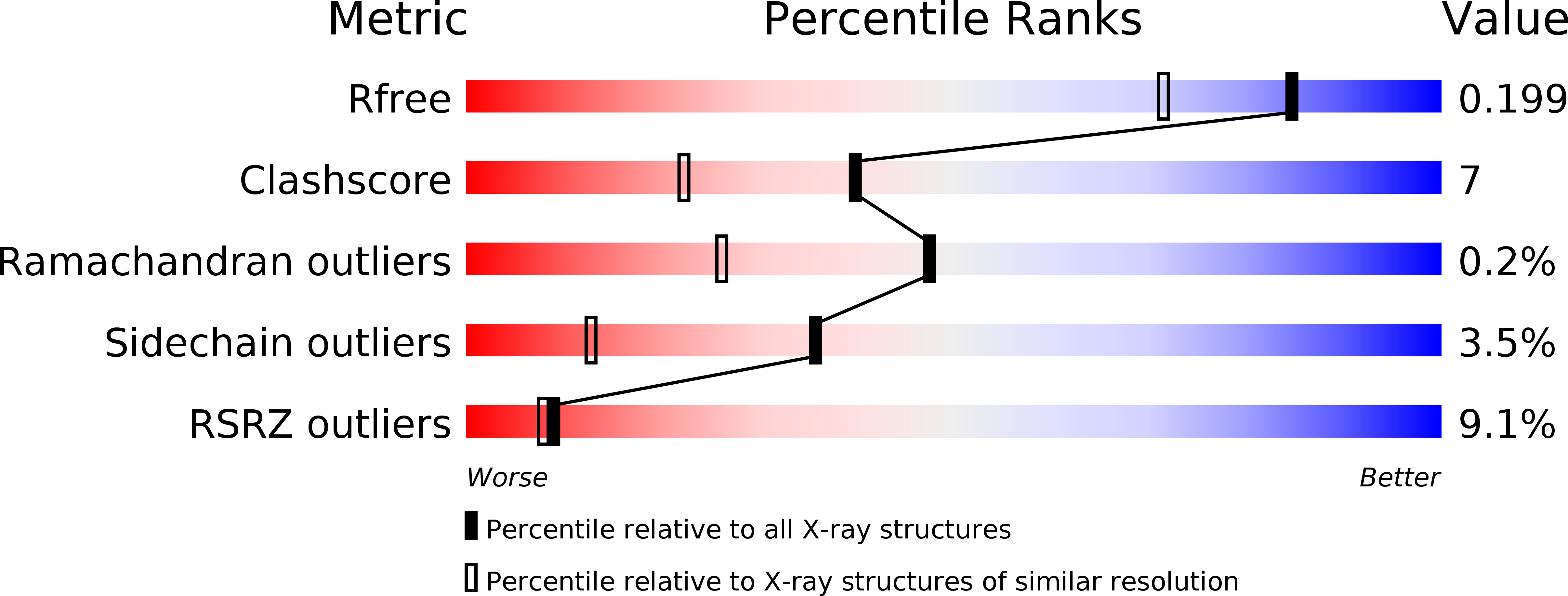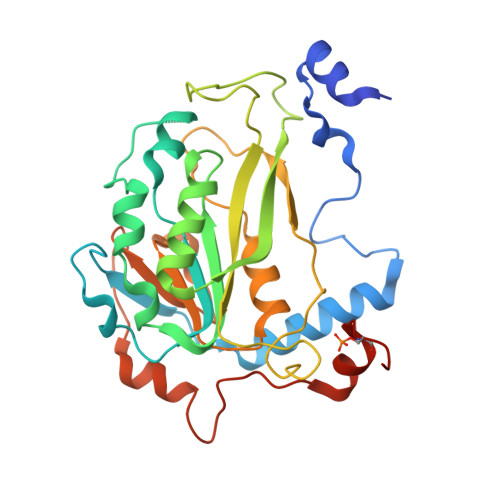Structural basis of N6-adenosine methylation by the METTL3-METTL14 complex
Wang, X., Feng, J., Xue, Y., Guan, Z., Zhang, D., Liu, Z., Gong, Z., Wang, Q., Huang, J., Tang, C., Zou, T., Yin, P.(2016) Nature 534: 575-578
- PubMed: 27281194
- DOI: https://doi.org/10.1038/nature18298
- Primary Citation of Related Structures:
5IL0, 5IL1, 5IL2 - PubMed Abstract:
Chemical modifications of RNA have essential roles in a vast range of cellular processes. N(6)-methyladenosine (m(6)A) is an abundant internal modification in messenger RNA and long non-coding RNA that can be dynamically added and removed by RNA methyltransferases (MTases) and demethylases, respectively. An MTase complex comprising methyltransferase-like 3 (METTL3) and methyltransferase-like 14 (METTL14) efficiently catalyses methyl group transfer. In contrast to the well-studied DNA MTase, the exact roles of these two RNA MTases in the complex remain to be elucidated. Here we report the crystal structures of the METTL3-METTL14 heterodimer with MTase domains in the ligand-free, S-adenosyl methionine (AdoMet)-bound and S-adenosyl homocysteine (AdoHcy)-bound states, with resolutions of 1.9, 1.71 and 1.61 Å, respectively. Both METTL3 and METTL14 adopt a class I MTase fold and they interact with each other via an extensive hydrogen bonding network, generating a positively charged groove. Notably, AdoMet was observed in only the METTL3 pocket and not in METTL14. Combined with biochemical analysis, these results suggest that in the m(6)A MTase complex, METTL3 primarily functions as the catalytic core, while METTL14 serves as an RNA-binding platform, reminiscent of the target recognition domain of DNA N(6)-adenine MTase. This structural information provides an important framework for the functional investigation of m(6)A.
Organizational Affiliation:
National Key Laboratory of Crop Genetic Improvement and National Centre of Plant Gene Research, Huazhong Agricultural University, Wuhan 430070, China.


















